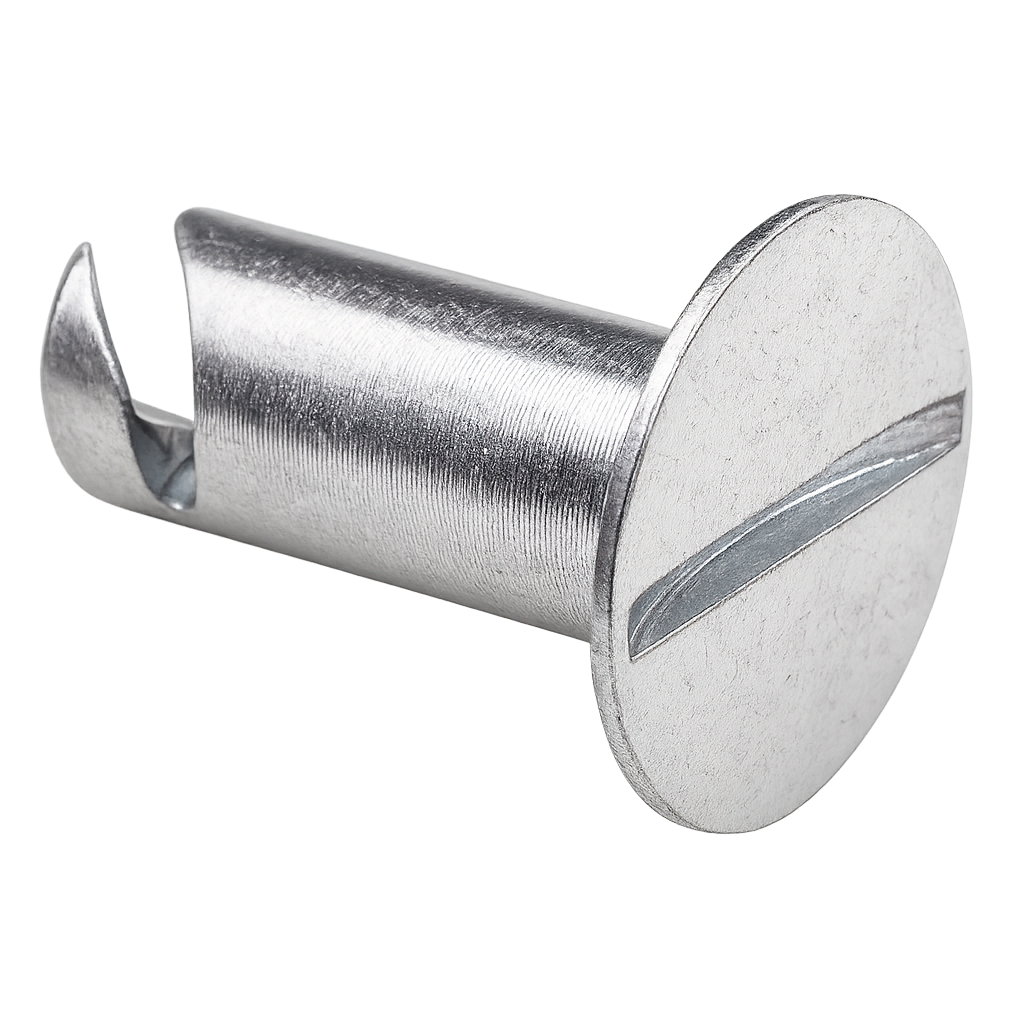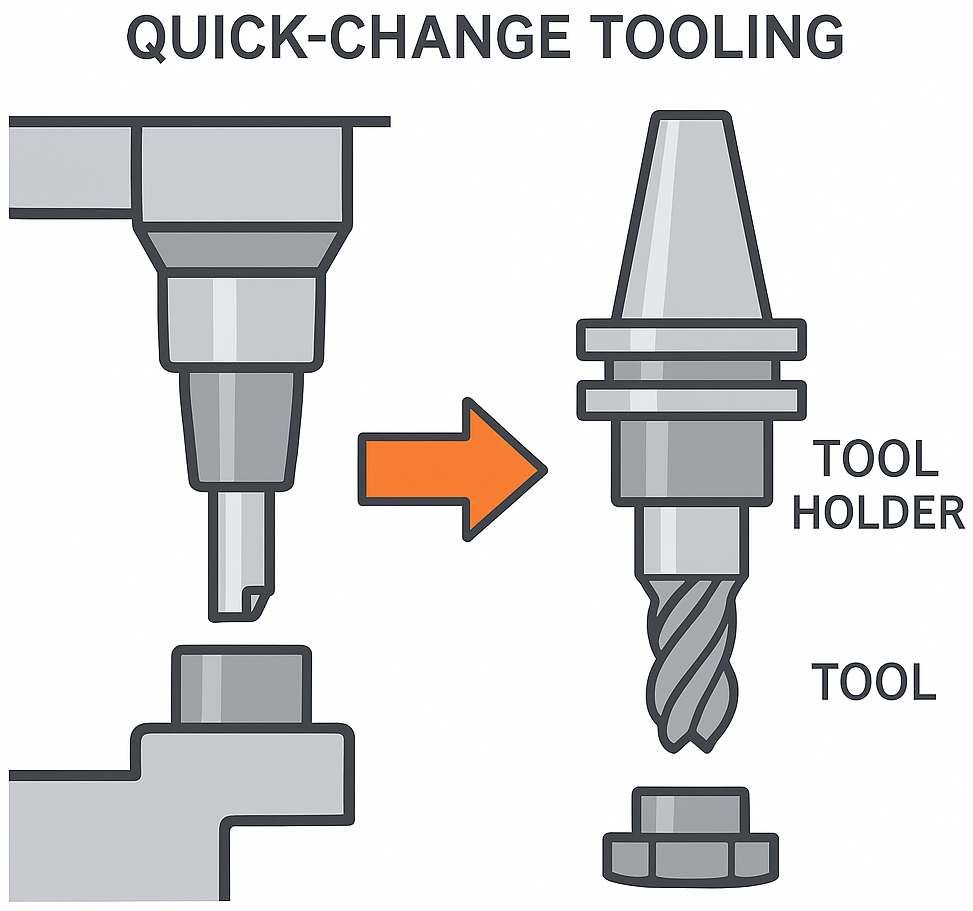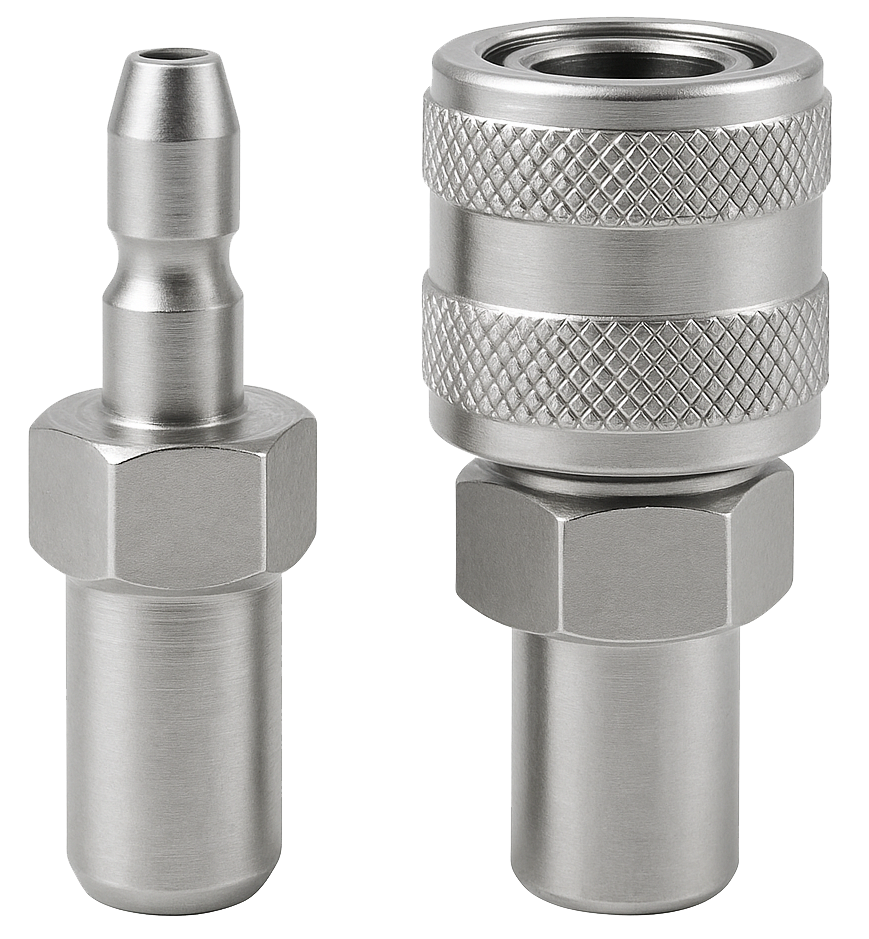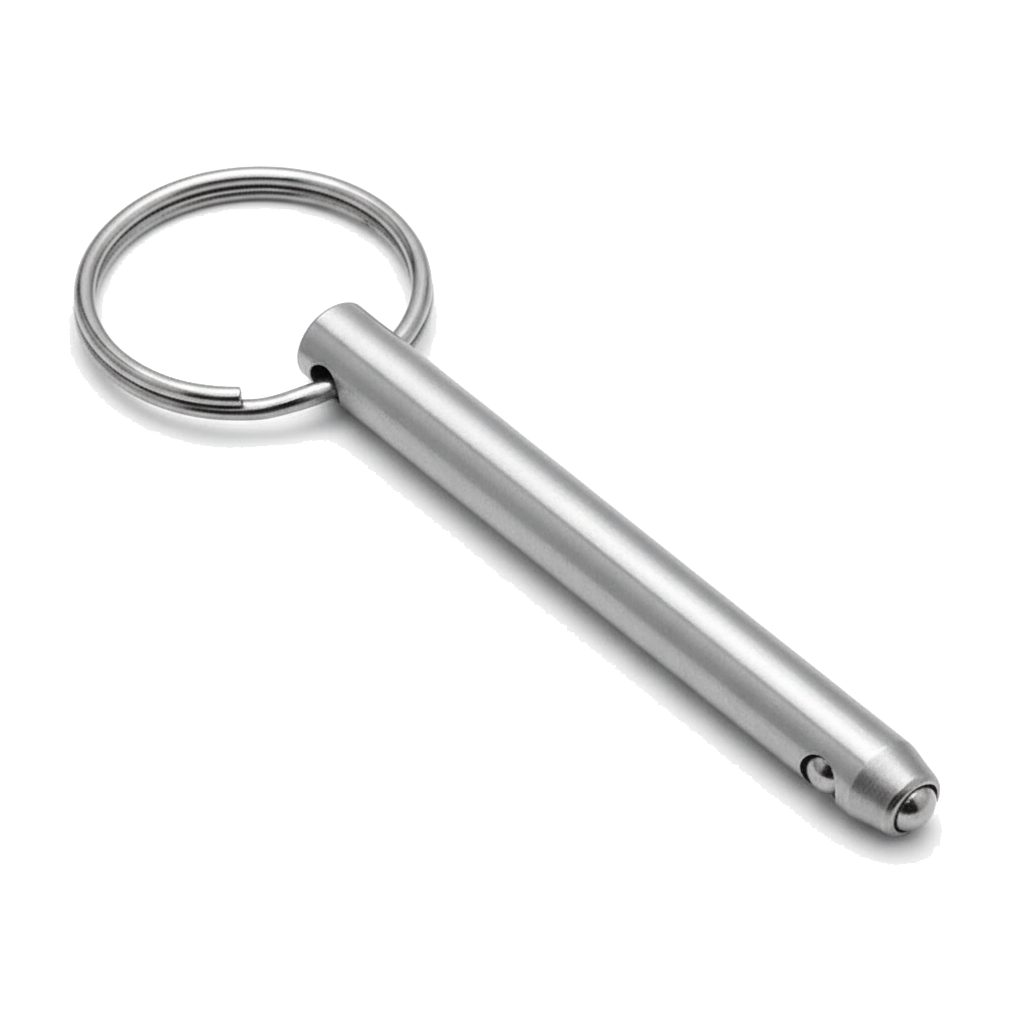Resources
Glossary
Quarter-Turn Fastener
A quarter-turn fastener is a quick-release fastener that secures panels or components with a simple 90° turn. Instead of relying on threads, it uses a cam or stud mechanism that locks into a mating receptacle when turned, providing secure clamping with minimal effort. The design often keeps the stud attached to the panel, preventing it from being misplaced during removal.
These fasteners are widely used in aerospace, automotive, marine, and industrial equipment where frequent access is required, such as for inspection or maintenance. They save time compared to traditional bolts or screws while still offering a strong, vibration-resistant hold.

Quenched & Tempered (Q&T) bolt
A Quenched & Tempered (Q&T) bolt is a steel fastener whose high strength and toughness come from a two-stage heat treatment. The bolt (or its steel) is first austenitized and quenched (rapidly cooled) to form very hard martensite, then tempered (reheated below the critical temperature) to dial back brittleness and set a balanced combination of high tensile/yield strength, toughness, and fatigue resistance. Unlike case-hardened parts, Q&T bolts are through-hardened—the strength runs through the section, not just at the surface.
Where you’ll see them: structural steel connections, heavy equipment, automotive suspensions/driveline, wind towers, flanges/valves (e.g., A193 B7), and other high-load joints. Common families produced by Q&T include ASTM/ISO property classes like 8.8 / 10.9 / 12.9, SAE Grade 8, and structural grades such as A325/A490 (now F3125).
Notes: observe the specified coatings and installation procedures—very high-strength Q&T bolts can be susceptible to hydrogen embrittlement with some electro-zinc processes, so coatings are often restricted by the standard.
Quick-Change Tooling
Quick-change tooling refers to systems designed to let operators swap out tools, dies, or attachments rapidly on machines without the need for lengthy adjustments or special tools. The goal is to reduce downtime and increase productivity in manufacturing or machining processes.
Quick-change systems typically use standardized holders, couplings, or clamping mechanisms so that tools can be locked in place securely but released instantly when a change is needed. This is especially important in machining centers, stamping presses, and CNC machines, where setup time can significantly impact efficiency.
CNC machining and milling: toolholders that allow rapid replacement of cutting tools.
Stamping and forming presses: quick-change die systems to reduce setup between runs.
Welding and robotic systems: interchangeable heads and fixtures.
Assembly lines: modular tooling to switch quickly between different product setups.

Quick-Connect Coupling
A quick-connect coupling (also called a quick-release coupling or quick-disconnect) is a mechanical device that allows two fluid or air lines to be connected and disconnected quickly, without tools. It typically consists of a male plug (nipple) and a female socket (coupler). When pushed together, they lock securely; when released (usually by pulling back a sleeve), they disconnect instantly.
Quick-connect couplings are designed to provide fast, leak-free, and reliable connections for systems carrying compressed air, hydraulic fluid, water, gas, or other media. Many include automatic shut-off valves that prevent fluid loss or air leakage when disconnected.
Pneumatic tools (air compressors, hoses, spray guns).
Hydraulic machinery (construction, agriculture, industrial equipment).
Automotive and aerospace (fuel, coolant, and fluid transfer systems).
Medical and lab equipment where quick, sterile connections are needed.

Quick-Release Pin
A quick-release pin is a mechanical fastening device designed to secure, align, or connect components quickly and easily without the need for tools. It typically consists of a metal pin shaft, a spring-loaded locking mechanism, and a grip or pull ring that allows for fast manual operation.
When the pin is inserted into aligned holes of two or more parts, spring-loaded balls or detents at the tip expand outward to lock the pin in place. Pulling the ring or button retracts these locking balls, allowing the pin to be easily removed. This makes quick-release pins ideal for applications requiring frequent assembly, adjustment, or disassembly.
They are commonly used in aerospace, automotive, marine, and industrial equipment, as well as fixtures, jigs, and sports equipment, where reliability and ease of use are essential.
Most quick-release pins are made from stainless steel, carbon steel, or aluminum, offering strength and corrosion resistance. Some designs feature detent balls, positive locking buttons, or T-handles for specific ergonomic or safety needs.
AKA: Detent Pin

